Best Practices for Search Engine Optimization: Part 1

We’ll be spending the next few weeks looking at the SEO process, hoping to remove a little of the mystery and focus on what’s important to a business-owner or marketing team. Some of the topics we’ll discuss are:
- What’s the SEO process?
- Organic SEO & Pay Per Click (PPC): How they work and when to use each
- Google Analytics: Making the most of your data
- Video: How it impacts your Google rankings
How Important is Search Engine Optimization?
The Internet has quickly become one of the most dynamic, cost effective marketing mediums. The average American alone spends over 60 hours online a month, nearly half of that time dedicated to searching for and viewing website content. Google sees 3 million search queries a day, and that number only continues to rise.
With such a sheer amount of online activity, it’s little wonder why it’s become so important for your corporate website to be found online. Search Engine Optimization (SEO) is a marketing strategy to boost both your online and offline sales — as the internet has become pocket-sized, thanks to tablets, smartphones, and other mobile devices, customers are using the search engines not only as a means of finding online places to shop, but also as a tool for research that leads them to brick and mortar stores.
Internet Marketing is a Process, Not a Product
The complexity of Search Engine Optimization is due to ever-changing (and frustratingly, never fully documented) search engine algorithms combined with the rapid pace at which technology and society’s use of it are evolving. This may seem daunting if you’re just getting started, but the overall approach to SEO is not unlike that of traditional marketing campaigns:
- Set goals that focus on growing your company
- Deploy tactics that best serve your goals
- Measure results and look for new insights about your company and its customers
- Begin the process again with new or more advanced goals
Setting Goals
The most vital step of your SEO campaign has nothing to do Organic vs PPC, Google vs Bing, social networks, or rich media. The cornerstone to your online marketing boils down to one word: goals.
Setting good goals can be trickier than it looks; too often, it’s easy to get caught up in metrics – website hits, “likes” on Facebook, views on YouTube, and more. Can you spot the goal below that is clearly focused on business growth?
- “We should have a viral video.”
- “We need 5,000 website hits.”
- “We want to increase our monthly Orlando sales for peanut butter by 10%.”
Goals #1 & #2 lack any focus and don’t correspond to any specific product or service within a company. Goals like #3 are clearly defined and are attached to a return on investment. So, how do we set good goals? We use a SMART approach:
Specific
Goals should be directly related to growing your business. Be specific and don’t worry about any supporting technology yet. A specific goal will usually address:
- What: What do I want to accomplish?
- Why: Specific reasons, purpose or benefits of accomplishing the goal.
- Who: Who is involved?
- Where: Identify a location.
- Which: Identify requirements and constraints.
Example: A bank wants to increase its number of wealth management customers enrolled at its Orlando office. Leads will come from the bank’s website.
Measureable
If you don’t have a way to measure your goal, how can you tell if your campaign is successful? When you measure your progress, you stay on track and reach your targets. To get started, examine how your business and its competitors are currently performing and use that as a baseline.
Example: Our hypothetical bank currently enrolls 5 new Orlando customers a month from their website. Competitors are averaging around 7.
Attainable
The best goals are those that are neither out of reach nor below standard performance.
Example: Our bank decides to aim for 8 new Orlando customers. This means the website only needs to produce 3 new sales a month.
Relevant
It’s critical to set goals that matter. Relevant goals are worthwhile, match a company’s needs, and ideally, support other goals.
Example: Our bank is focusing on building leads via their website because their research indicates their existing and potential customers are now using the internet as a primary research tool. Our bank has also launched several new online products in the past few months, which will benefit from new wealth management traffic.
Time Sensitive
A goal should be grounded within a time frame. This creates a sense of urgency, plus provides your campaign with an endpoint so you can begin to collect data to determine overall success.
Example: Our bank’s timeframe for their goal is 6 months. Once they examine their data from the initial campaign, they’ll decide if they want to try to achieve more than 8 web leads a month in Orlando… or perhaps, expand into other markets or offer additional services.
Working SMARTer
Once you have your goals set, it’s time to select your tactics. Our friend, the bank, knows that the best way to increase web leads is via SEO. But should they go organic or launch a Google Adwords campaign? We’ll take a look at that in part 2 of this series.
Tags: web design, web development, online marketing, search engine optimization, Google Adwords, organic search, ppc, sem, Social Marketing / SEO



